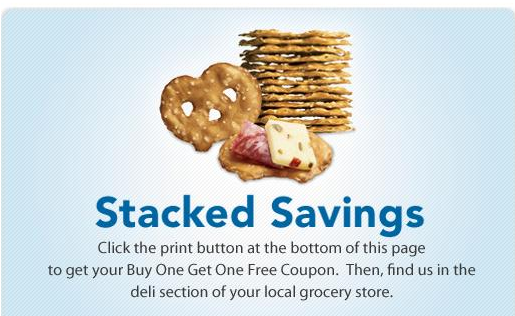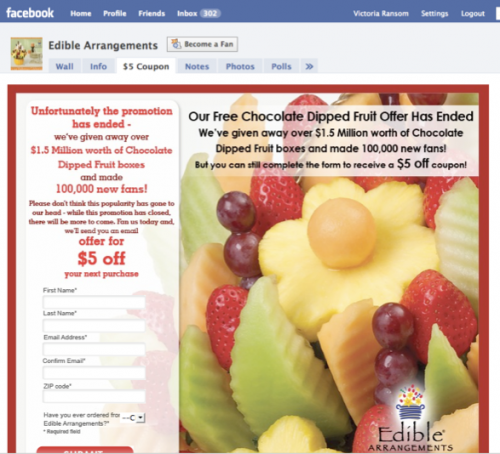Buy it or build it?
This is a primary question that involves thought for any business. As it relates to marketing, there’s no shortage of ways to buy it from ads to affiliate relationships to list buying. But with social media, you build it. And it often comes with a better return on investment because you’re taking out the middleman and building a more direct relationships with your customers.
Want proof? Here are 9 case studies where social media took out the middleman.
1. CLEVELAND CLINIC: Heavily regulated category like healthcare usually shy away from social media but not the Cleveland Clinic. By structuring a cross-functional team to enable education, collaboration, and smart governance, the Cleveland Clinic deepened engagement with its consumers around the globe – both providers and patients. They used Facebook and Twitter for daily wellness tips; LinkedIn for professional recruitment and YouTube for content on diseases and patient stories. Since the Cleveland Clinic established social media as a cross-functional discipline, it has seen a noticeable increase in website traffic, attendance at health lectures and new patients making and keeping appointments.
2. EDIBLE ARRANGEMENTS. Through their Facebook page, Edible Arrangements offered consumers a voucher for free chocolate dipped strawberries. But to redeem the coupon, fans had to visit an Edible Arrangements store providing Edible Arrangements franchisees the opportunity to promote their store to a slew of new customers. This campaign generated 170,000 new fans and a double-digit increase in sales versus year ago.
3. FOILED CUPCAKES: Has shown extraordinary growth, strong ROI and built a social community where 95% of their customers come from Facebook, Twitter and LinkedIn. When Foiled Cupcakes had their first Groupon promotion, the promotion went live at midnight and fans bought 800 dozens by 8 am.
4. HARLEY DAVIDSON: (HDTalking.com): Harley owners created a website and social community of over 3 million Facebook fans and 62,000 Twitter followers that runs entirely on user-generated content. Here, Harley owners trade photos, jokes, where to find hard to find parts, advice on Harley models and ownership plus there are at least 7 mechanics on-call at all times. HDtalking.com now has 58,000+ Harley owner participating and cost to Harley for operations is negligible.
5. H&R BLOCK: Used Facebook and Twitter during the tax season to provide immediate access to a tax professional for Q&A in the “Get It Right” social media campaign. The effort secured 1,500,000 unique visitors and answered 1,000,000 questions for a 15% lift in business versus the prior year when there was no social media “Get It Right” program. Here’s how Amy Worley explains how the company got it right.
6. IBM: Let employees set up internal blogs to promote collaboration and innovation within the company on a global scale. There was no external blog and no pressure on employee to participate in internal blogs but but there were 17,000 internal blogs, 100,000 employees participating regularly and as many as 500,000 participants involved in company crowd-sourcing “jams.” Crowd-sourcing identified the 10 best incubator businesses, which IBM funded for $100 million and generated $100 billion in total revenue for a 10-to-1 ROI with a 44.1% gross profit margin.
7. MELROSE JEWELERS: An eRetailer sold high end watches like Rolex and Breitling where the average sales is $5,000. They offered consumers $100 off on their next purchase if they “Like” them on Facebook. They had an app on their Facebook page that functioned as a simple quiz where, after taking the quiz your “watch personality” was revealed at the end (e.g. you are James Bond 200o Breitling man) to engage and secure email addresses of potential customers. You also got $150 off after your purchase if you took a picture of your new watch and posted it on Facebook. As a result, Facebook fans went from 30,000 to over 180,000 in one quarter and sales went from a few hundred thousand to over $2,000,000.
8. PRETZEL CRISPS: Launched a$1.00 coupon on their Facebook page. Within 36 hours, their fan base grew from 5,000 to 12,000. So, they launched another coupon – Buy One, Get One Free. Only this time they didn’t tell their fans. No matter. Fans found out on their own and the “letting you in on a secret” factor had a viral effect that built the fans from 14,000 and 29,000 and now it’s at over 62,000. But fans just tell one side of the story. The redemption rate for the fist coupon was 87%; the redemption rate for the second was 95% and annual sales increase was 93%.

8. SETON HALL UNIVERSITY: Was discovering that prospective students went to their Facebook page before their website to find out whether this was the right school for them. So, they engaged on Facebook to increase enrollment and revenue and tagged whether Facebook played a role. Tuitions increased +18% and deposits increased +25% with 2X as many students coming to website from Facebook.
9. TORTILLALAND: Found social media was a great resource for building a database and conducting market research with consumers for their fresh, uncooked tortillas. In the space of a few months, they ran a sweepstakes; then, a free coupon on Facebook that created a database of over 14,000 and insights into target consumers through survey research. They built brand assets that would have cost 100’s for thousands of dollars through suppliers for a very small fraction of that amount.
When developing your brand’s growth strategy, will you buy it or build it and take out the middleman?







[…] Rob Petersen at BarnRaisers offers 9 case studies where social media took out the middleman. Useful if you’re interested in doing the same thing for your business. Or, for that matter, […]
[…] you an idea of how we’ve helped other businesses and there are also over 150 case studies of social media, social crm, social commerce and SEO for other brands and businesses on this site because […]
[…] Social media can be a very effective marketing tool and has been shown to drive sales in a number of business success stories: take a look at some of Social Media Examiner’s case studies, an example of a successful retail case study, and examples of 9 recent social media campaigns. […]
[…] [3] https://barnraisersllc.com/2012/04/9-case-studies-social-media-middleman/ […]
[…] CLEVELAND CLINIC: By structuring a cross-functional team to enable education, collaboration, and smart governance, the Cleveland Clinic deepened engagement with its consumers around the globe – both providers and patients. They used Facebook and Twitter for daily wellness tips; LinkedIn for professional recruitment and YouTube for content on diseases and patient stories. They saw increased website traffic, attendance at health lectures go and, most importantly, new and existing patients making and keeping more appointments. […]